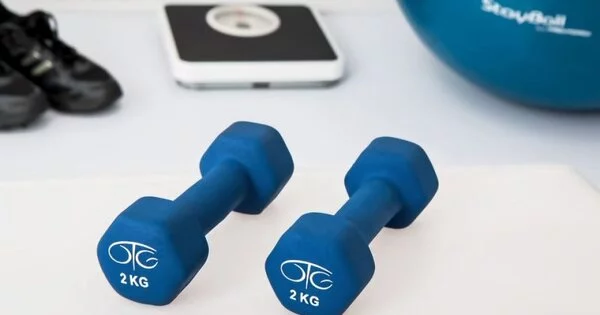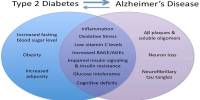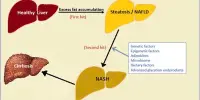Cardiac rehabilitation is a structured program of exercise, education, and counseling that is designed to assist people in recovering from heart problems and improving their overall cardiovascular health. Researchers found that participating in home-based cardiac rehabilitation was associated with a 36% lower risk of death compared to veterans who did not participate in cardiac rehabilitation in a study of US military veterans.
Participating in home-based cardiac rehabilitation after a heart attack or cardiac procedure was associated with a 36% lower likelihood of death from heart-related complications among U.S. military veterans within four years compared to those who did not participate in rehabilitation programs, according to new research published today in the Journal of the American Heart Association, the American Heart Association’s open access, peer-reviewed journal.
According to the American Heart Association, despite the fact that cardiac rehabilitation has been shown to reduce the risks of hospital readmissions and death, it is significantly underutilized. Cardiac rehabilitation focuses on quitting smoking, improving one’s diet, engaging in physical activity, managing stress, and taking medications to treat high blood pressure or high cholesterol.
“Whether in a hospital or home, cardiac rehabilitation is all about healthy behavior changes,” said senior study author Mary A. Whooley, M.D., a primary care physician at the San Francisco Veterans Affairs (VA) Medical Center and professor of medicine at the University of California, San Francisco. “However, changing behaviors is difficult, and while care facilities may offer on-site cardiac rehabilitation, many patients don’t choose to take advantage of follow-up treatment. The biggest surprise of our analysis was how few patients chose to participate in cardiac rehabilitation.”
This study suggests that home-based cardiac rehabilitation is associated with a lower death rate when compared to individuals who receive no cardiac rehabilitation. Previous home-based cardiac rehabilitation studies did not address this important benefit.
Mary A. Whooley
While cost, along with geography and logistics, can be a barrier to participating in cardiac rehabilitation, cost should not have been a factor in this study because health care services were covered by the VA.
“We don’t know why so many patients opted out of rehabilitation,” Whooley explained. “Even when home-based cardiac rehabilitation was available at a time and location convenient for them, only 44% of eligible patients chose to participate. Many patients simply did not want to change their behaviors.”
According to data, only 16% of Medicare patients and 10% of veterans who were hospitalized for a heart attack between 2007 and 2011 participated in cardiac rehabilitation. In 2016, only 24% of eligible Medicare beneficiaries chose to participate in on-site/facility-based cardiac rehabilitation. According to the Million Hearts® Cardiac Rehabilitation Collaborative, a national initiative co-led by the CDC and CMS, increasing cardiac rehabilitation participation to 70% of cardiac patients after hospitalization could save 25,000 lives and prevent 180,000 additional hospitalizations each year.
“Many randomized trials have demonstrated similar mortality benefits from home-based and facility-based cardiac rehabilitation,” Whooley said.
This is the first U.S. study to provide evidence of survival benefit with home-based cardiac rehabilitation in people with heart disease, according to the study authors. The ongoing COVID-19 pandemic which temporarily closed countless facility-based rehabilitation programs indicates a growing need to explore opportunities in telehealth care for people with heart disease, they said.

The data for 1,120 veterans who were eligible for cardiac rehabilitation at the San Francisco VA Medical Center between August 2013 and December 2018 were analyzed in this study. This study’s participants were 98% men, 2% women, 76% white, 88% non-Hispanic, and 68% lived in a city. Approximately half had been admitted to the hospital for percutaneous coronary intervention, also known as angioplasty, 20% for coronary artery bypass grafting, 14% for heart attack, and 18% for other reasons. Only 44% (490 people) enrolled in the San Francisco Healthy Heart home-based cardiac rehabilitation program, which was entirely voluntary.
The 12-week home-based cardiac rehabilitation program included up to nine coaching calls, motivational interviews, a workbook, and a personal health journal to track vital signs, exercise, and diet. They also got a blood pressure monitor, a scale, and (if they wanted it) a stationary bike. A nurse or exercise physiologist worked with participants one-on-one to develop attainable physical activity goals. Participants were followed for an average of 4.2 years after hospitalization and received follow-up phone calls from program staff three and six months after program completion.
Among the researchers’ findings:
- The death rate at one-year after hospitalization was 4% among those who did not participate in cardiac rehabilitation versus 2% among those who participated in home-based cardiac rehabilitation.
- Overall, those who participated in the cardiac rehabilitation program were linked with a 36% reduction in odds of dying from complications compared with those who did not.
- Deaths during the entire follow-up period occurred in 12% of rehabilitation participants versus 20% of non-participants.
Researchers note scientists don’t yet know the optimal number of at-home cardiac rehabilitation sessions are needed to achieve lasting success for people with heart disease, and this warrants further research. Moreover, when compared with traditional, facility-based programs, researchers believe home-based cardiac rehabilitation may lead to more lasting behavior changes that improve outcomes, because integrating healthy behaviors into a participant’s home routine from the outset has been associated with better adherence rates.
While there is no standardized approach to providing home-based cardiac rehabilitation, it is generally shorter than on-site care, and “as technology expands, behavior modification in a participants’ own home environment may help make cardiac rehabilitation more accessible and lifestyle changes more sustainable,” according to Whooley.
Another advantage of home-based cardiac rehabilitation is that it has shorter wait times to begin therapy (average of 25 days versus 77 days after a cardiac event) because capacity is not constrained by the availability of facility-based programs.
“Our biggest challenge in the United States is that many health insurers do not cover home-based cardiac rehabilitation,” she explained. “Currently, Medicare only pays for on-site or facility-based cardiac rehabilitation.”
The American Heart Association supports bipartisan legislation, such as the “Increasing Access to Quality Cardiac Rehabilitation Care Act,” which calls for increased cardiac rehabilitation resources.
The chair of the 2019 joint American Heart Association/American College of Cardiology statement on the effectiveness of home-based cardiac rehabilitation, Randal J. Thomas, M.D., called this study a “unique, landmark report.”
“This study suggests that home-based cardiac rehabilitation is associated with a lower death rate when compared to individuals who receive no cardiac rehabilitation,” said Thomas, who is professor of medicine in the Mayo Clinic Alix School of Medicine working with the Mayo Clinic Cardiac Rehabilitation Program in Rochester, Minnesota.
“Previous home-based cardiac rehabilitation studies did not address this important benefit.” More research is needed, but this study strongly suggests that home-based cardiac rehabilitation has a mortality benefit. Although the study did not determine whether home-based cardiac rehabilitation affects death rates as well as or better than center-based cardiac rehabilitation, it does show that home-based cardiac rehabilitation reduces death rates when compared to patients who do not participate in cardiac rehabilitation.”
Cardiac rehabilitation is strongly recommended for people who have had a heart attack, chest pain, heart failure, or who have had bypass surgery, percutaneous coronary intervention, heart valve surgery, or heart transplantation. Furthermore, an American Heart Association scientific statement states that for those who are unable to participate in an on-site cardiac rehabilitation program, home-based rehabilitation is an effective alternative to cardiac rehabilitation.
The study had several limitations, including no comparison to facility-based cardiac rehabilitation, no randomization, and the majority of participants were English-speaking, older men. The researchers note that it is unclear whether the benefits of home-based cardiac rehabilitation would be similar in women or non-English speakers.
















